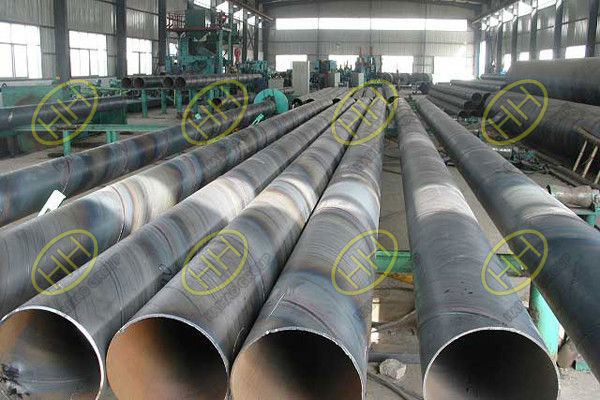What is the submerged arc welding and its advantages?
Submerged arc welding is a method of arc welding by burning under flux layer. Its full name is submerged arc automatic welding. It is one of the most commonly used welding methods in industrial production. Suitable for large batch, thicker and longer straight line and larger diameter of the circular weld welding. It is widely used in the manufacture of chemical containers, boilers, shipbuilding, Bridges and other metal structures.

Spiral submerged arc welding (SSAW) steel pipes
The main advantages of submerged arc welding are:
(1) High productivity. The length of wire conduction is shortened, and the current and current density are increased, so the arc penetration and welding wire deposition efficiency are greatly improved. In addition, due to the heat insulation effect of flux and slag, there is basically no radiation loss of heat on the arc, splash is also less, and the total thermal efficiency is greatly increased.
(2) High weld quality. The welding pool protection is more perfect, the weld metal impurities are less, as long as the welding process selection is appropriate, it is easier to obtain a stable and high quality weld.
(3) Good working conditions. In addition to reducing the labor intensity of manual operation, arc light is buried under the flux layer, without arc radiation, so the working conditions are better.
It also has disadvantages, such as:
(1) It is not as flexible as manual welding, generally only suitable for the horizontal position or lower inclination of the weld.
(2) Edge preparation and assembly of workpiece requires high quality and long time.
(3) Due to the submerged arc operation, the welding pool and weld formation process cannot be seen, so the welding specification must be strictly controlled.
In Hebei Haihao Group, the submerged arc welding is widely used in the production of flanges, pipe fittings and other pipeline products, with mature technology and great advantages.
